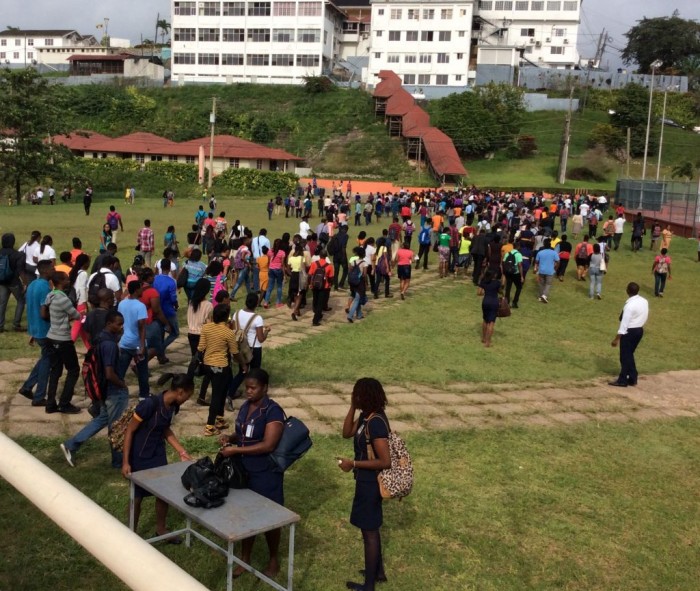Be Prepared for Earthquakes
By: , January 22, 2016The Key Point:
The Facts
- This involves conducting regular inspections of buildings to identify and remove items that could fall and cause injury and/or death should an earthquake occur.
- The Earthquake Awareness Month is being observed from January 1-30, under the theme: ‘Earthquake Safety: Don’t Be Scared…. Be Prepared’.
The Full Story
Jamaica’s location along the northern margin of the Caribbean Plate and the presence of very active faults on the island make it vulnerable to earthquakes.
As such, earthquakes can occur at anytime and anywhere, and so it is very important that persons are prepared.
The significance of the damage that can occur during an earthquake is dependent on the level of preparedness. The planning and execution of activities, such as earthquake drills are important and can mean the difference between life and death.
Speaking in an interview with JIS News, Director of Information and Training at the Office of Disaster Preparedness and Emergency Management (ODPEM), Cheryl Nichols, says before an earthquake, persons should undertake what is called a hazard hunt.
This involves conducting regular inspections of buildings to identify and remove items that could fall and cause injury and/or death should an earthquake occur.
“Some of these include your overhanging items, potted plants, bookshelves and your fridge,” Miss Nichols says, noting that once the hazards are identified, measures can be taken to prevent them from falling.
She says that during an earthquake, it is important that persons keep calm and respond appropriately.
“You need to drop, cover and hold… ensure that you are protecting your body under some sturdy furniture, in a door jam or in an open area away from falling objects,” Miss Nichols says.
Persons are advised not to go under beds or other objects that could collapse. Also, they should stay away from windows, bookcases, or tall furniture that could fall.
If outside, persons should stay away from high-rise buildings, walls, light poles or other structures that may fall. If possible, go to an open area away from anything that could fall and cause injury.

“If you are driving and the earth begins to shake, you can pull over to the side of the road and stop if it is safe to do so. Some places that are not safe are your overpass and underpass, being on a bridge or other such hazardous area,” Miss Nichols informs.
Creating a family or business disaster plan is also important as this will outline the steps to take if an earthquake strikes.
The Director of Information and Training also encourages households, schools and workplaces to practise earthquake drills at least twice for the year.
“In doing your drill, what you are seeking to do is simulate an earthquake occurrence and ensure that you take the necessary safeguards to eliminate any possible risk that could present (itself), when the earth really shakes,” she says.
“Drills are always useful because they are the closest you will get to the real thing without the reality of it happening. It is from the drills you will realise where the snags are and you will use your drills to recognise the safety of your evacuation route and where your assembly points are located,” she notes further.
Meanwhile, Scientific Officer at the Earthquake Unit located at the University of the West Indies (UWI), Karleen Black, tells JIS News that some 231 earthquakes were recorded in the island in 2015.
Eighty per cent of these were local events occurring across the island or just offshore.
“Given the number of earthquakes, it is surprising that there was only one felt report for 2015 and this was a magnitude 3.5 earthquake that occurred west of Whitehouse in Westmoreland,” Ms. Black informs.
While Jamaica has experienced several tremors, the last major event was the great Kingston earthquake of 1907, which caused more than 1,000 deaths, damaged numerous buildings and started several fires.
The 1692 Port Royal quake was perhaps the largest and most damaging, with about 5,000 deaths from the quake itself and the subsequent outbreak of yellow fever. A section of the town sank into the sea.
The Earthquake Awareness Month is being observed from January 1-30, under the theme: ‘Earthquake Safety: Don’t Be Scared…. Be Prepared’.
Among the activities scheduled for the month include an Earthquake Awareness Open Day on January 20; and a Seismic Youth Forum in February.


